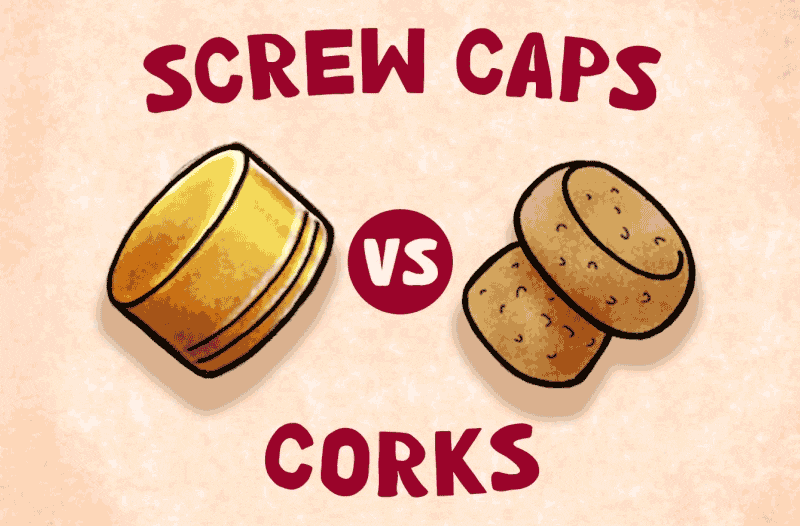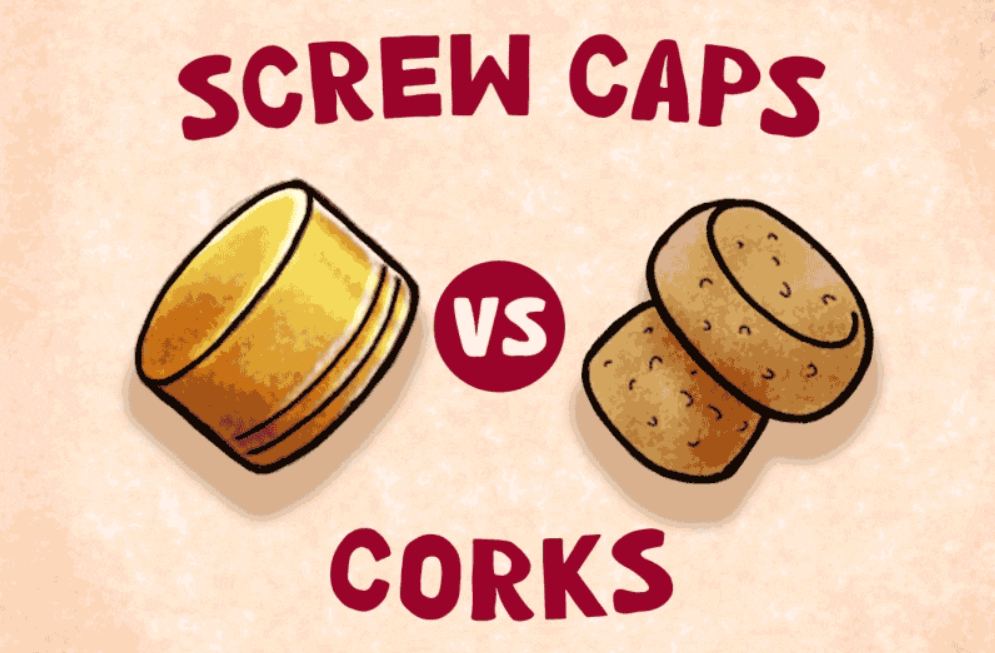February 05, 2024. – As Wine & more writes, the ongoing debate among wine enthusiasts surrounds the choice between two prevalent wine closures: screw caps and corks. While cork has enjoyed a centuries-old tradition as the go-to option, screw caps have experienced a surge in popularity in recent times. Each closure method carries its own set of advantages and disadvantages, and the decision between them may hinge on various factors.

Exploring Wine Closure Options: A Comprehensive Overview
In the realm of wine closures, choosing the right seal for your bottle involves a careful consideration of various options available in the market today.
Natural Cork
A timeless classic, natural cork originates from the bark of cork trees primarily found in Portugal and Spain. Esteemed by wine connoisseurs, it facilitates a gradual aging process by allowing the wine to breathe. However, the drawback lies in the occurrence of cork taint, a chemical reaction leading to undesirable aromas in some corks.
Screw Cap
Initially met with skepticism, the threaded metal cap has proven to be a superior closure, especially when compared to a flawed cork. Recognized for its user-friendly design, easy resealing, and elimination of cork taint risk, screw caps have gained acceptance in the wine industry, challenging the notion that they are only suitable for less premium wines.
Synthetic Cork
For those hesitant to abandon the traditional uncorking ritual, synthetic corks made of plastic offer a compromise. While initially debated for long-term aging suitability, advances in technology make synthetic corks a compelling choice for those seeking reliability without compromising the traditional bottle opening experience.
Vinolok (Glass Stopper)
A visually appealing alternative, Vinolok combines a glass stopper with a circular polymer disc, offering reliability, practicality, and recyclability. However, the higher cost and absence of the traditional uncorking ritual may limit its widespread adoption.
Crown Seal
Affordable and practical, the crown seal is a cost-effective option. However, it lacks the romanticism associated with traditional wine opening rituals and raises questions about long-term reliability.
Agglomerate Cork
A modern twist on traditional cork closures, agglomerate corks are crafted from small particles of natural cork subjected to an advanced treatment process. This process aims to eliminate cork taint and ensure a consistent closure. Despite the advantages of micro-oxygenation and tradition, some agglomerate corks may still carry a cost comparable to well-made natural cork.
In the diverse landscape of wine closures, each option comes with its unique set of pros and cons. The choice ultimately depends on factors such as tradition, cost, reliability, and the desired wine aging process. As technology advances, wine enthusiasts can explore a range of closures that not only preserve the integrity of the wine but also cater to individual preferences and rituals.
Croatian Winery Opting for Screw Caps

In the dynamic world of winemaking, a significant transformation has taken place over the last decade as an increasing number of wineries, including notable examples like Enosophia Winery in Feričanci, are opting for screw caps as an alternative to traditional cork closures.
Enosophia Winery, known for its commitment to tradition, has embraced a dual approach, utilizing both natural corks and screw caps. The decision to incorporate screw caps into their offerings was influenced by a combination of factors, including cost-effectiveness, convenience, and quality control.
Martin Kovačević, chief enologist at Enosophia, emphasizes:
“One of the main reasons Enosophia Winery chose screw caps for our Dika line is consistency. Even healthy cork is a natural product and can vary in quality, leading to inconsistencies in the wine. Screw caps, on the other hand, provide a consistent seal every time, ensuring that the wine inside remains fresh and of high quality. For Dika line, that is essential.
Dika line is also present in the retail market. While removing a cork with a corkscrew may be seen as a traditional and romantic ritual, it can also be a hassle for an average consumer. Screw caps are much easier to open and reseal, making them a more practical option for everyday wine drinkers (…)
We do not produce large quantities on a global scale, but it is still a larger scale production. The imperative is to achieve a Best Buy option for consumers. Screw caps are also less expensive.”
While acknowledging that Enosophia Winery does not operate on a massive global scale, Kovačević underscores the imperative to provide a cost-effective and consumer-friendly option. The lower cost of screw caps, coupled with their practical advantages, makes them an attractive choice for winemakers looking to cater to a broader audience.
PROS AND CONS OF CORK AND SCREW CAP
The debate between screw caps and corks continues within the industry, with winemakers and consumers alike expressing varying preferences. Examining the pros and cons of each closure method sheds light on the ongoing discourse.
Pros and Cons – Oxygen Ingress Comparison
Screw caps emerge as the superior option in preventing oxygen ingress into wine bottles. Oxygen exposure can lead to wine oxidation and spoilage, resulting in undesirable flavors and aromas. The consensus favors screw caps for better preservation over time.
Winner (apart from few exceptions): Screw Cap
Pros and Cons – Chemical Interaction
Corks can interact with wine, causing chemical reactions that affect flavor and aroma. Screw caps, made of inert materials, eliminate this concern. The absence of chemical interaction makes screw caps the clear winner in this category.
Winner: Screw Cap
Pros and Cons – Preservation of Wine and Aging Potential
While screw caps excel in preserving freshness, questions arise regarding their compatibility with long-term aging. Some wines benefit from the breathability of corks, contributing to complex flavors and textures over time. This category remains undecided, acknowledging the nuances of specific wine aging requirements.
Winner: Undecided
Pros and Cons – Tradition and Aesthetics
Cork closures embody tradition and elegance, appealing to wine enthusiasts who appreciate the ritual of uncorking a bottle. Conversely, screw caps offer an elegant alternative, as demonstrated in a short video. The winner in this category depends on individual preferences.
Winner: Cork
Pros and Cons – Practical Features
Screw caps, with their ease of opening and resealing, triumph in practicality. Eliminating the need for corkscrews, they cater to consumers seeking a hassle-free experience.
Winner: Screw Cap
Pros and Cons – Consistency in Sealing
Screw caps provide consistency in sealing, avoiding the natural variations associated with corks. This reliability ensures a uniform experience for each bottle, addressing uncertainties linked to cork closures.
Winner: Screw Cap
CONCLUSION
In conclusion, the shift toward screw caps in Croatian wineries reflects a broader trend in the industry. While screw caps demonstrate superiority in preserving wine, it’s essential to acknowledge exceptions, particularly for wines designed for extended cellaring that align with the time-tested tradition of natural cork closures. The debate persists, emphasizing the importance of understanding the specific needs and characteristics of each wine when choosing between screw caps and corks.
NOTE: The article was orginally written at wineandmore.com











